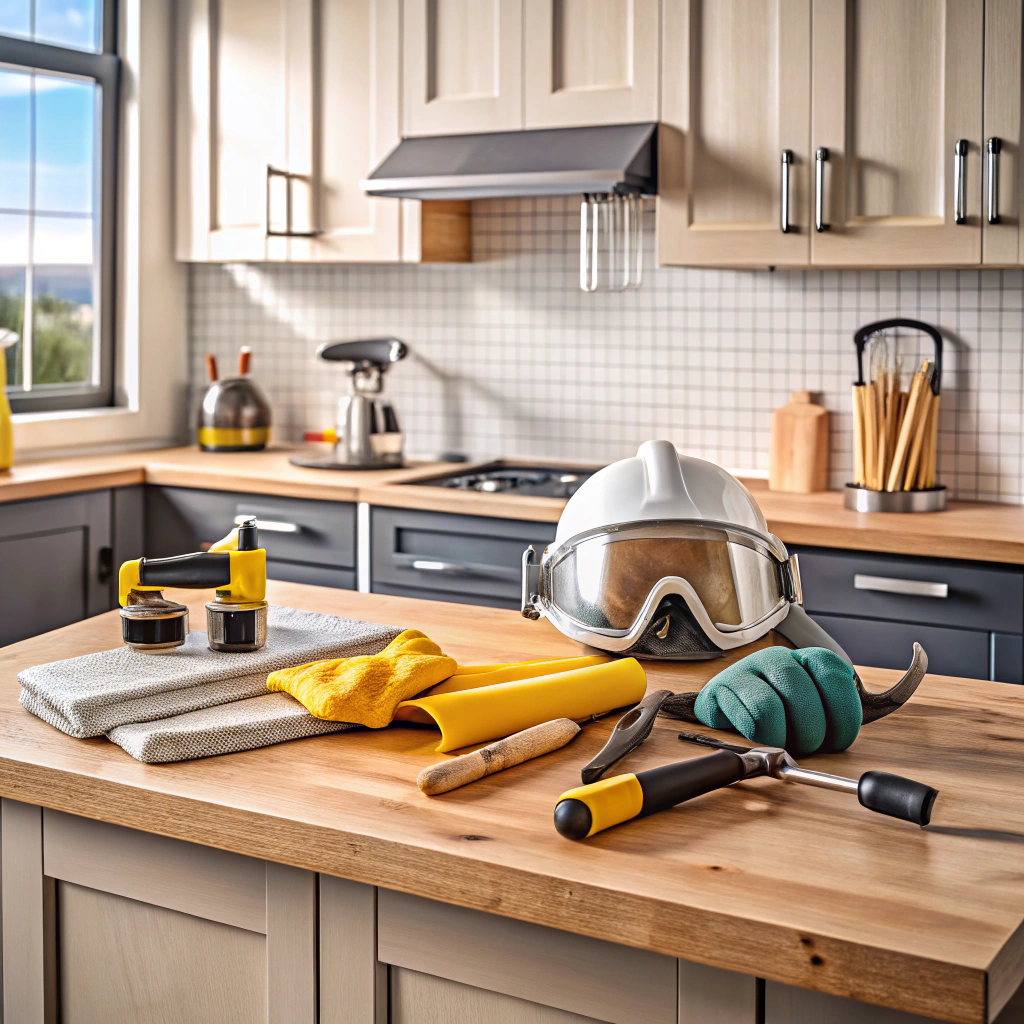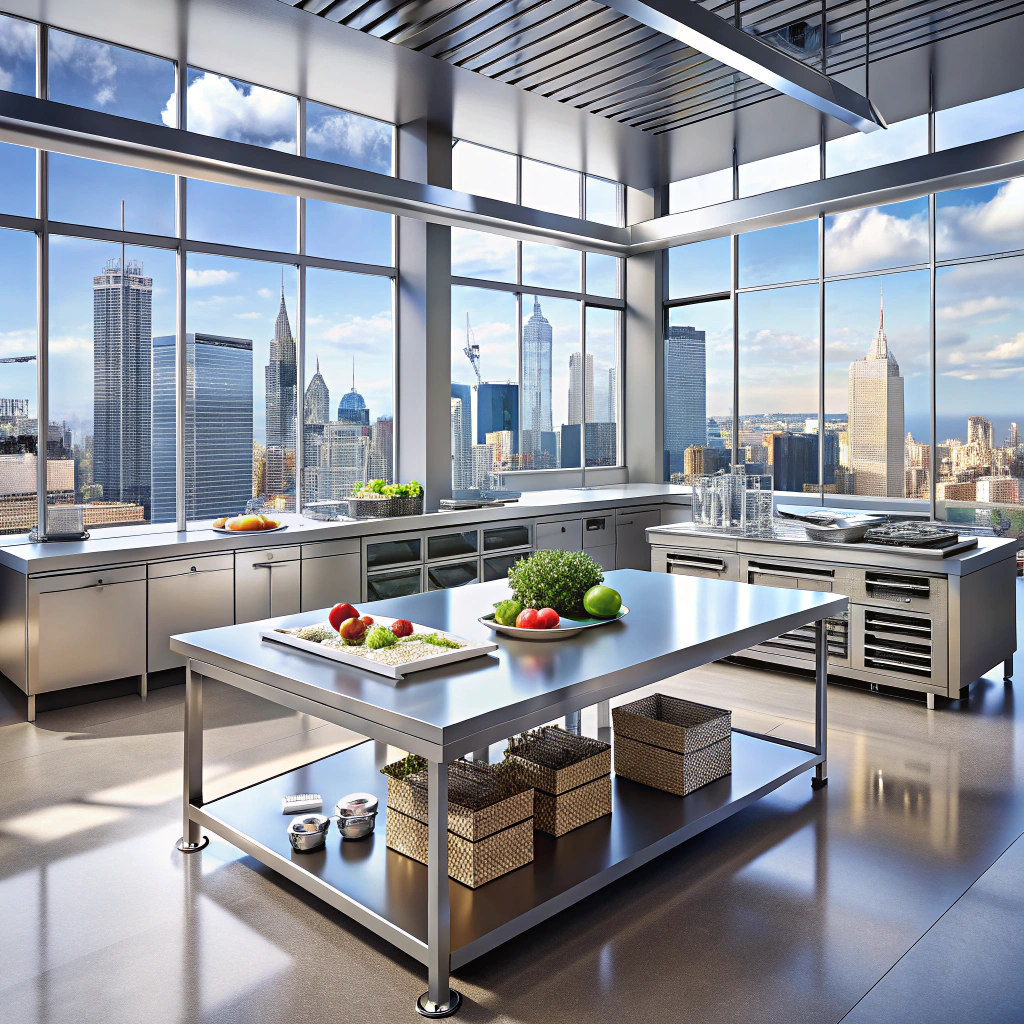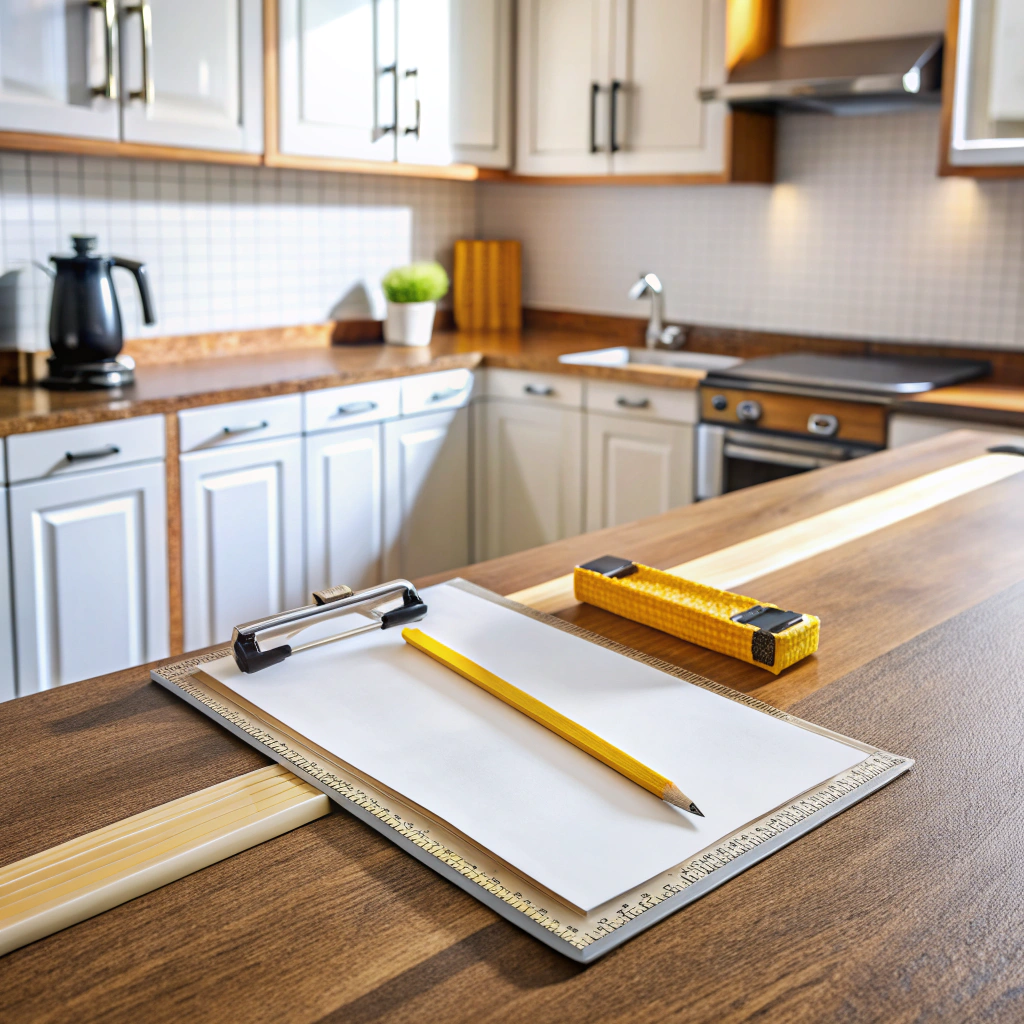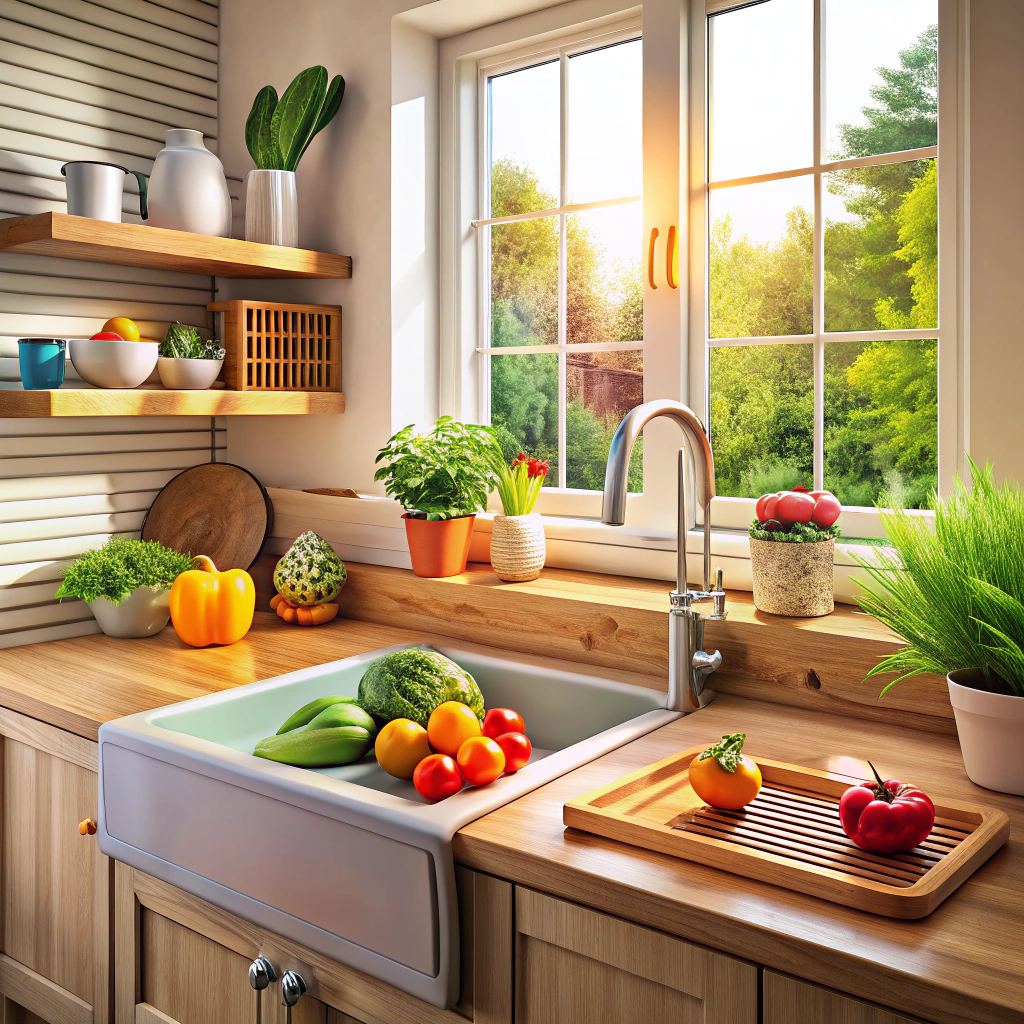Last updated on
Learn how to choose the perfect replacement cabinet shelves with this practical guide, ensuring your kitchen stays organized and looking great.
Tired of staring into the gaping maw of your chaotic kitchen cabinets, where shelves seem as rare as a quiet morning? Replacement cabinet shelves are the hero your kitchen never knew it needed. Dive into this piece and unearth the benefits, material choices, and pitfall-avoiding tips for perfecting your kitchen storage. With insights on fit, quality assurance, and savvy purchasing, you’re armed to transform your cabinets from clutter to class!
Key takeaways:
- Replacement shelves enhance kitchen organization and aesthetics.
- Choose between natural maple or white laminate materials.
- Verify measurements before purchasing to ensure a good fit.
- Consider adjustable shelves for flexible storage options.
- Read reviews carefully to avoid potential pitfalls.
What's Inside
Benefits of Installing Replacement Cabinet Shelves

Fresh new cabinet shelves can make your kitchen feel like it’s had a mini-makeover. Who doesn’t love a good makeover? More storage space for all those weirdly shaped pots and pans you swore you’d use more! Let’s not forget the satisfaction of a perfectly organized spice cabinet.
Better accessibility, too. Imagine not having to engage in a scavenger hunt every time you reach for that elusive jar of jalapeños. Your back and knees will thank you for fewer bending and stretching gymnastics.
Improved aesthetics is another perk. A saggy shelf is no one’s definition of chic. Fresh replacement shelves can match your kitchen’s style, whether you’re channeling rustic farmhouse or sleek modern vibes.
Lastly, longevity is key. Upgrade for better weight capacity and durability, so your shelves can stand the test of time – or at least the next Tupperware avalanche. The right replacements can make everything more robust.
Types of Materials: Natural Maple Vs White Laminate
Natural maple and white laminate, like Batman and Robin, each bring their unique strengths to the kitchen.
Maple isn’t just a pretty face; it’s strong and durable. It can withstand the butter knives of life and, let’s be honest, looks stunning while doing it. Perfect for those who appreciate the organic charm of wood grain. Plus, it can handle the occasional elbow while you reach for the cereal box.
White laminate, on the flip side, is the low-maintenance buddy you never knew you needed. It’s sleek, modern, and fits into any kitchen like a chameleon. The best part? Spills wipe away with a grin, turning kitchen disasters into mere hiccups. It’s particularly loved for its bright, clean look, which can transform even the smallest kitchen into a space that feels airy and open.
Both choices have their merits, so think about whether you want rustic charm or sleek practicality in your kitchen adventures. It’s like choosing between cookies and cake – sometimes you just need both!
Made in the USA: Quality Assurance
Choosing products manufactured domestically can offer significant advantages. There’s a reputation for robust quality control. Those quality checks? As thorough as a detective solving a murder mystery. Poppy seed muffin: Innocent or Alleged Poppy Seed? No stone left unturned!
Fast shipping times are another plus. Your shelves might arrive faster than your Friday night pizza delivery. Pepperoni beams of joy, straight to your doorstep.
Supporting local manufacturers also bolsters the economy. It’s like adding an extra tablespoon of fiscal responsibility into the mixing bowl of commerce.
Environmental benefits add to the appeal; reduced shipping distance often means a smaller carbon footprint. Think twice, breathe easy, know you’ve made a green choice.
Online Purchasing Tips for Cabinet Shelving
Shopping for cabinet shelves online can be a little like a treasure hunt—but without the map! Here are a few tips to fill your cart with confidence:
First, double-check measurements. You wouldn’t buy shoes two sizes too small (unless you’re Cinderella’s stepsister, perhaps). Always measure your cabinet’s height, width, and depth accurately. It’s like playing Goldilocks, but more productive.
Next, read product descriptions as if they reveal a hidden plot twist. Materials, weight capacity, and finish are crucial details tucked in there. Avoid surprises like a laminate shelf posing as solid wood.
Check reviews like a detective. Sort out the truth while dodging the dramatic flair of some reviewers who could rival Shakespeare. Look for consistent comments on quality and fit.
Be a platform explorer. Compare prices across multiple sites. One click could save you enough money to buy a fancy cheese to put in those cabinets later. Büro knows, you might even discover a better deal with free shipping.
Lastly, scrutinize the return policy. Sometimes things just don’t fit, literally. A good return policy is your safety net—more reliable than my attempt at assembling a flat-pack.
Understanding Fit and Finish
Let’s dive into the fit and finish. Imagine trying to squeeze into your old high school jeans—tight fit, right? Cabinets can have similar issues. Here’s how to ensure a snug fit without the drama.
First, measure thrice, cut once. Seriously, grab your trusty tape measure and jot down those numbers like they’re winning lotto digits. Dimensions are your new best friend.
Consider the shelf’s thickness. Standard sizes are great, but if you’re storing grandma’s cast-iron collection, sturdier might be smarter.
Don’t overlook adjustable shelves. They’re like the Swiss Army knife of storage—flexible and ever-ready for change.
Finish is all about personality and protection. Opt for finishes that complement your kitchen vibe but are durable enough to withstand spaghetti sauce splatters and the occasional pinch of chaos.
Hinge compatibility matters. Ensure shelves don’t get tangled with hinges leading to cabinet chaos. Check for clearance to avoid perplexing puzzles.
There you have it—smart steps to fitting and finishing like a pro. Now keep that kitchen looking sharp!
Exploring Cabinet Accessories and Hardware
Ah, the underappreciated world of cabinet accessories and hardware! It’s like finding the perfect bow tie for your tuxedo—a small touch with a big impact. Suddenly, your cabinets aren’t just standing there, they’re strutting.
First up, consider those charming shelf pins. They’re not just holding up shelves; they’re like the unsung heroes in an action movie, quietly delivering stability with a smile (if pins could smile, that is).
Next, take a gander at soft-close hinges. They’re the gentle giants of the cabinet world, ensuring your shelves close quietly without drama. It’s like a librarian gently hush-hushing any potential racket.
Don’t overlook pull-out trays. They’re the handymen of the cabinet, gliding in and out to offer you a seamless reach to your favorite vintage mixing bowl, or the stubborn spice jar that’s played too hard to get.
And what’s an accessory wish-list without a lazy Susan? Perfect for corner cabinets, she spins with grace, offering everything from sundried tomatoes to peanut butter with the flair of a synchronized swimmer.
Finally, the often-ignored cabinet handles. They can transform your kitchen aesthetic faster than you can say, “Pass the salt.” From sleek chrome to rustic wood, they’re the handshake your kitchen didn’t know it needed.
Buckle up, folks. Your kitchen cabinets are about to get a whole lot sassier.
Questions to Ask Before Buying
Before making your purchase, consider what kind of load your shelves will bear. If you’re a canned soup aficionado or a fan of heavyweight pots, choose shelves that can handle the weight without bowing like an old hammock.
Look into whether the shelves are adjustable or fixed. An adjustable shelf system is like the yoga of the cabinet world—flexible and adaptable to your storage needs. Fixed shelves, however, might suit a minimalist who knows exactly what fits where and has embraced stability like a saint.
Measure twice, buy once! Check your cabinet’s inner dimensions like a cautious squirrel checks for buried acorns. The only thing worse than a shelf that doesn’t fit is letting your best measuring puns go to waste.
Consider the finish and style—are your cabinets crying out for a charming natural wood look or a sleek laminate vibe? Help them find their true identity.
Lastly, cross-check your supplier’s return policy. This isn’t Seventh Grade math class, but when things don’t add up, you want to know you’re covered without any long division drama.
Reviews: What to Look for and Trust
Ah, the world of reviews—a jungle of stars, comments, and more stars. Here’s the lowdown on navigating this wild terrain:
First, look for verified purchases. Trust the folks who actually put their money where their keyboard is.
Pay attention to the details in the feedback. “Good” is vague; “Sturdy and fits my oak cabinet perfectly” is music to your ears.
Spot repeated themes. Are multiple people complaining about warped wood? Run like someone spotted a spider in the pantry.
Weigh the pros and cons. If someone hates assembling furniture, their 2-star rating might not reflect the shelf’s true potential.
And finally, take all hyperbole with a pinch of salt. No shelf is going to change your life, but it just might make your kitchen look fabulous.
There you have it—reviews decoded! Now you’re ready to tackle the next stage of your shelf-quest with confidence.
Installation Tips for a Perfect Fit
Grab that measuring tape and channel your inner Bob the Builder! Getting those cabinet shelves to fit like a glove isn’t rocket science, but it does take a bit of patience and attention to detail.
First, measure the dimensions of your cabinet interior carefully. Double-check those numbers; if your phone has more memory than you, write them down! For accurate width, measure at both the top and bottom since cabinets aren’t always perfectly square.
When cutting, the golden rule is to measure twice, cut once. Trust me, blind luck isn’t your best friend here—no one wants shelves that look like they survived a bar brawl.
Levelness is key. Have a trusty level handy to ensure even installation. A lopsided shelf will make your teacups do the cha-cha.
Don’t skimp on brackets or hardware. Use the appropriate number based on the width of your shelf for optimal sturdiness. Otherwise, you’re setting yourself up for a game of “Avalanche: Kitchen Edition.”
Lastly, take a moment to admire your handiwork—and reiterate to anyone who’ll listen how painless that was. Cheers to cabinets that don’t require a map to navigate!




